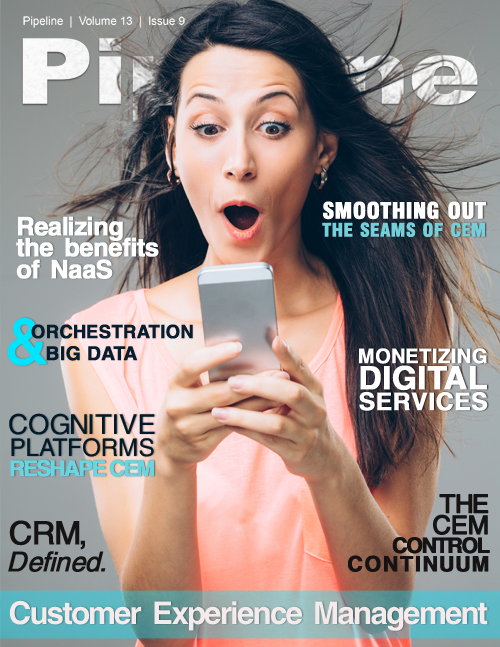The Continual Evolution of CEM to the Experience Management Control Continuum
By: Franco Messori

In the highly-competitive mobile and fixed-line telecommunications space, providing a differentiated customer experience is critical to reducing costs and churn, and to increasing top-line revenues. Customer experience is not a unified concept; it is a combination of customer behaviors, expectations, and lifestyles. However, many organizations still lack the requisite visibility to collect all the information needed to ensure delivery of a top-notch customer experience.
Continuous technology changes and initiatives like Voice over LTE (VoLTE), Real Time Gaming, Virtual Reality, Network Functions Virtualization (NFV), the Internet of Things (IoT), and 5G are attracting more customers, giving rise to new applications, and generating new businesses opportunities. At the same time, service providers are also under pressure to contain CAPEX and OPEX spend. It is time for service providers to evolve their Customer Experience Management (CEM) strategies to include solutions that can provide a holistic view of the customer, and enable accelerated deployment network and technology changes together with new revenue-producing initiatives.
In the modern view of CEM, the concept of “best in class” links to a specific customer profile and cannot be applied to a generic group of subscribers. Service providers need to start considering each customer as a unique person with a combination of specific and common expectations. In other words, adopt the concept that each individual customer counts, and that the service provider knows each and every one of its customers.
The key to making this successful transition will be the ability to deliver a complete 360-degree, or “holistic" view of the service provider’s business. This goes beyond simple network performance to also include services, location, and devices. Once implemented, the concept can also be applied to the customer experience domain, providing the ability to determine the relationships among multiple entities and dimensions, rather than merely reporting on each dimension individually.
Service providers in the service assurance, content delivery, and application segments, now require solutions capable of providing greater levels of visibility into the relationships among customer needs, behaviors, apps, mobility, services, terminals, and quality of experience through time and space—and Empirix has been at the forefront of this evolution. Equipped with such knowledge and expertise, service providers can be empowered to continuously adapt their networks and services to match exactly what each individual customer wants in that specific place and at that exact time.
The goal is simple: understand and measure each customer, provide what they ask and pay for, and, finally, predict what the next revenue flow will be. This objective will be even more critical with IoT and inclusion of Machine to Machine (M2M) and Machine to Human/Human to Machine (M2H/H2M) interactions. Without a comprehensive and unified understanding of the links connecting time, space (location), applications, customer behaviors and expectations (profile), service providers will not be in a position to take on the huge opportunity (and challenges) represented by the move to IoT.





















